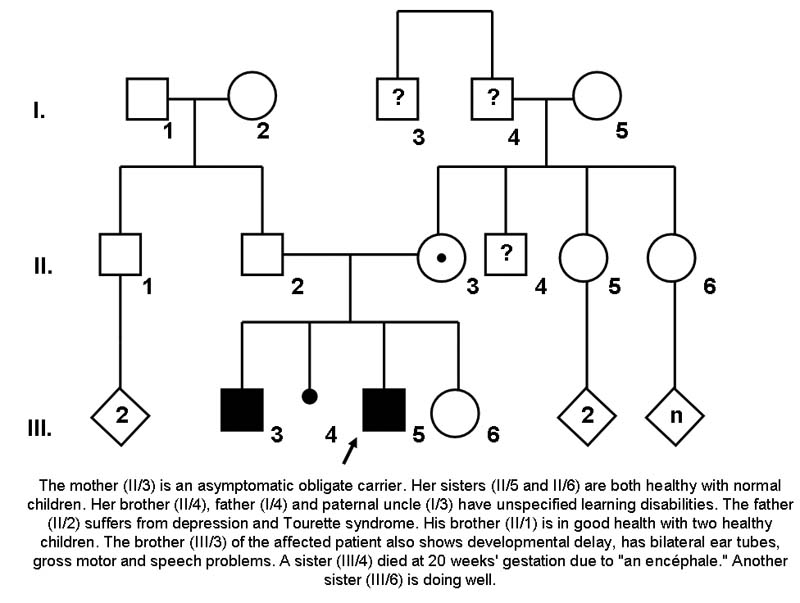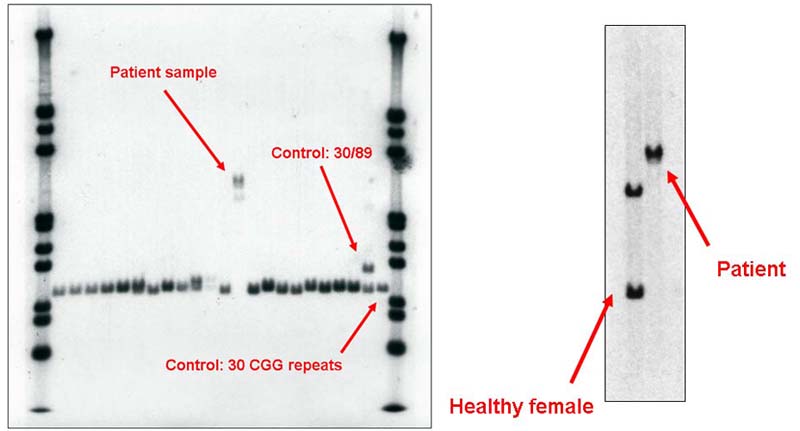
![]() Contributed by Marie Dvorakova, MD and Jeffrey A Kant, MD, PhD
Contributed by Marie Dvorakova, MD and Jeffrey A Kant, MD, PhD
![]() Published on line in July 2006
Published on line in July 2006
PATIENT HISTORY:
This 2-year-old male was referred to a Genetic Counselor at the age of 22 months for developmental delay and dysmorphic features.
The child was the 52 cm 3600g product of an uneventful full-term pregnancy, born to a 28-year-old G3P1. Apgar scores are unknown. At birth, he was found to have an undescended right testis. Early postnatal course was uneventful; first concerns were raised following a neurological examination at 9 months due to hypotonia.
Physical examination at 22 months revealed a proportionate-looking child with generalized hypotonia and dysmorphic features (long and narrow facies, high and prominent forehead, epicanthal folds, narrow and high-arched palate, posteriorly rotated ears, right hand with a transverse Simian crease, pectus excavatum and anteriorly displaced anus). Developmental milestones provided by the parents were suggestive of global developmental delay. The child sat alone at 9 months; rolled from belly to back at 7 months, rolled from back to front at 9 months, and started saying 'dada' at 8 months and mama at 11 months.
FAMILY HISTORY:

PATIENT WORK-UP:
Chromosomal analysis: 46, XY
FISH for 15q deletion/duplication: negative
Methylation analysis of the SNRPN locus (Prader-Willi/Angelman Syndrome): normal biparental inheritance
MRI of the brain: thin corpus callosum, otherwise unremarkable
Ophthalmologic exam: no retinal abnormalities
Skeletal survey: no abnormalities, normal bone age
Biochemical tests: plasma amino acids, very long-chain fatty acids, plasmanic acid, phytanic acid, 7-dehydrocholestrol and urine for quantitative organic acid within normal limits; transferrin isoelectric focusing: no congenital defects of glycosylation
SOUTHERN BLOT ANALYSIS OF THE FMR1 GENE:
